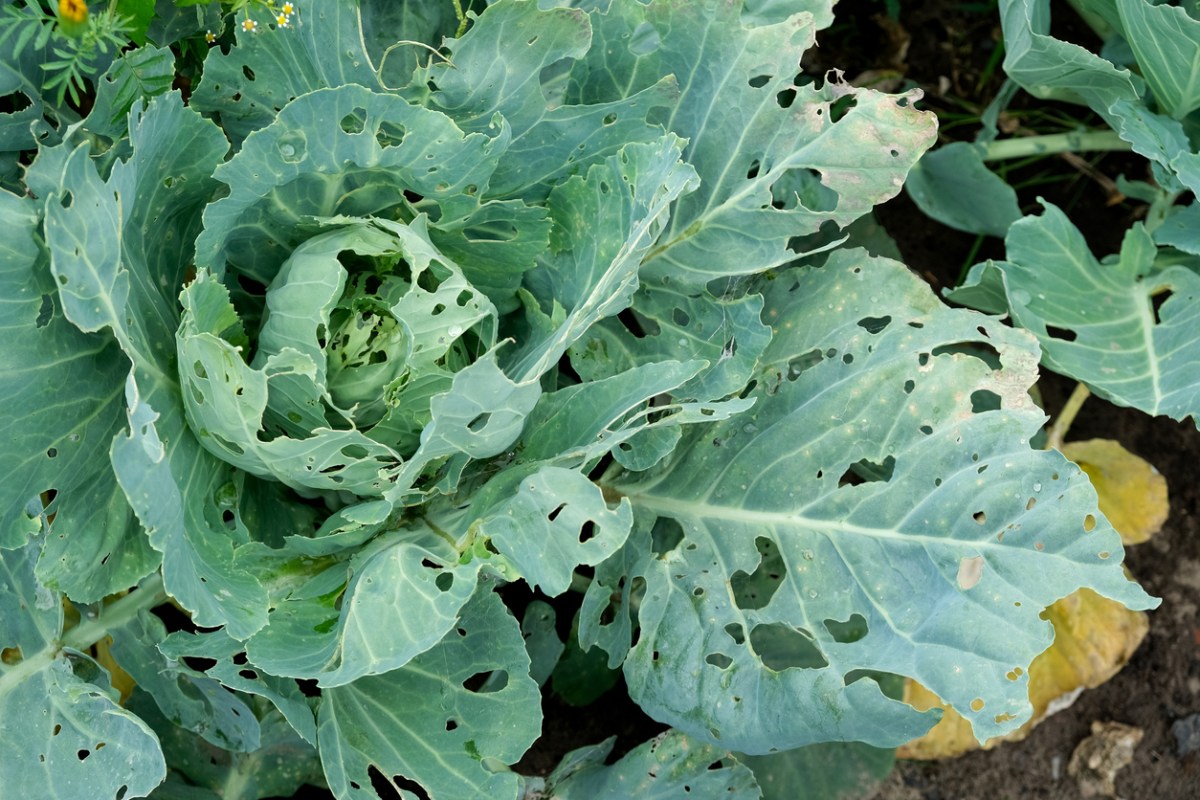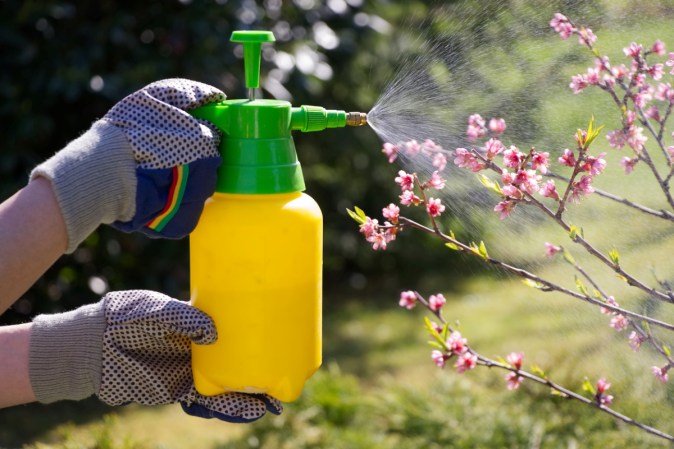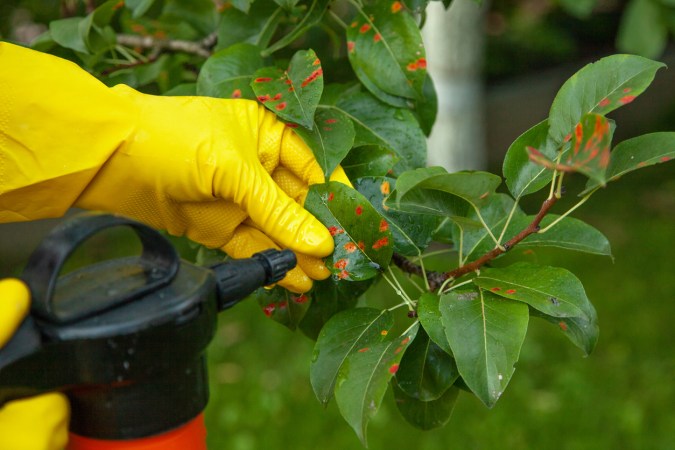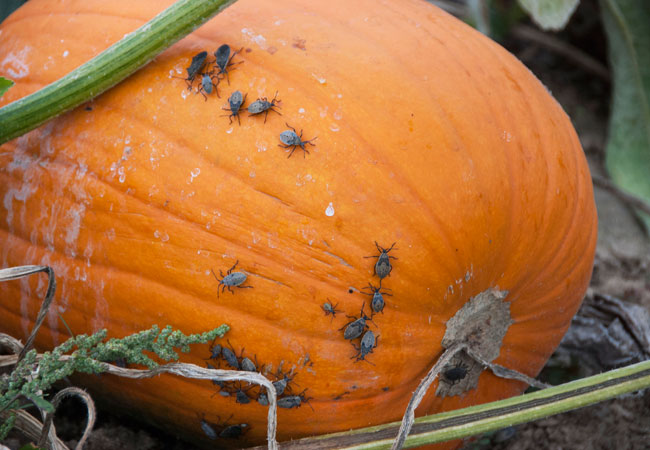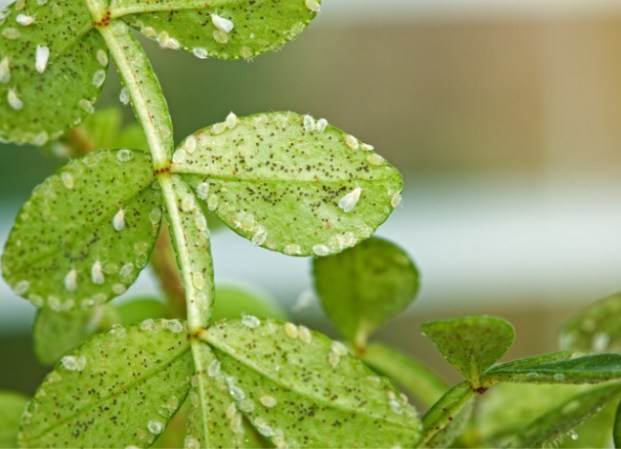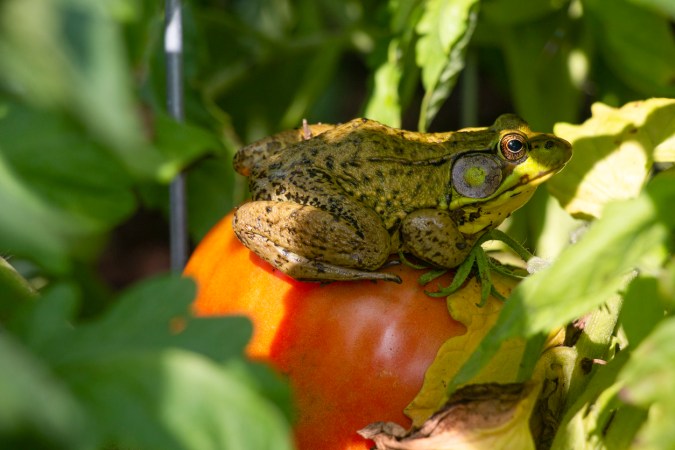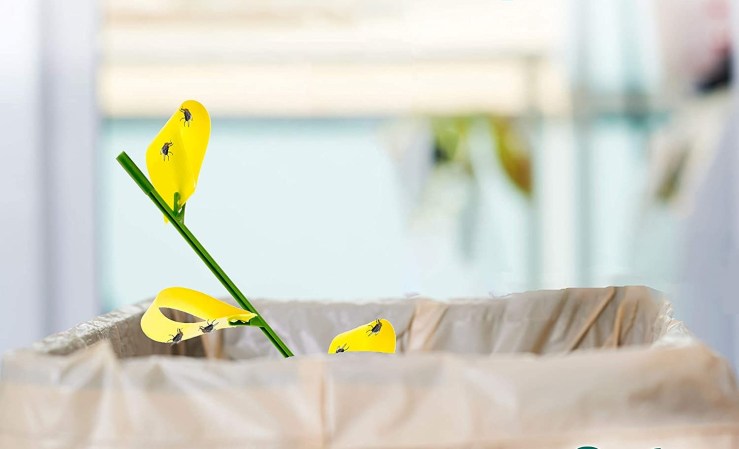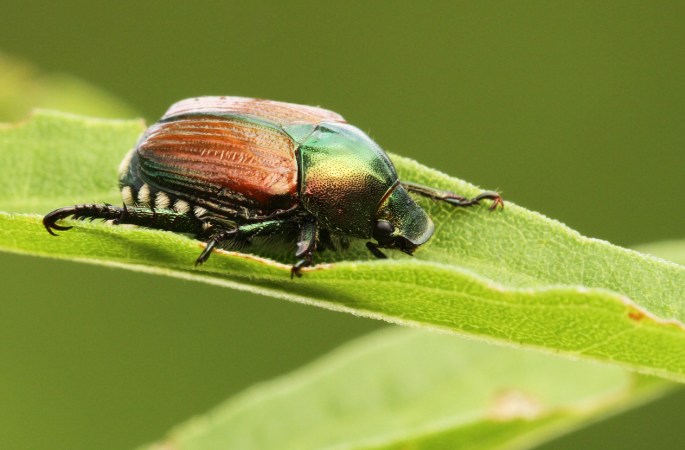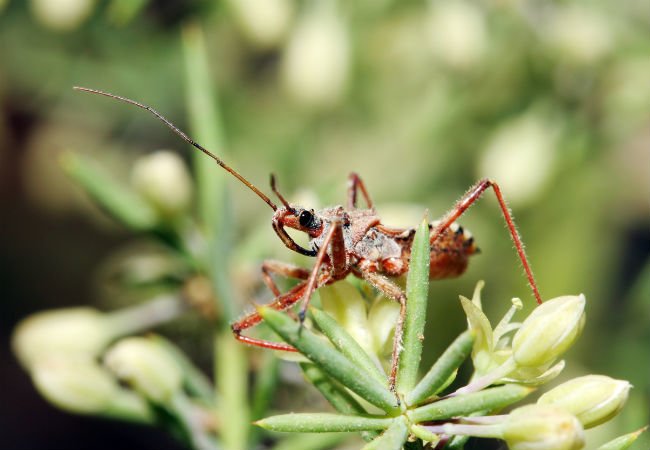We may earn revenue from the products available on this page and participate in affiliate programs. Learn More ›
Garden bugs can elude detection, identification, and attempts to eliminate them. It can be increasingly tough since insects’ patterns and life cycles can be affected by climate change and there are a few new invaders in gardens this year.
Since some bugs are good for the garden, it’s important to not panic and immediately spray pesticides. Instead, seek help identifying the culprit and applying Integrated Pest Management (IPM) strategies. This means starting with gentle solutions that do not harm the environment, and help protect your garden in the long term. The overall goal is to keep insects away by keeping plants healthy with proper care.
Following are some of the bugs that may be your garden’s biggest threats this spring. To fight them effectively, be on the lookout for their telltale signs of damage.
1. Japanese Beetles (Popillia japonica)
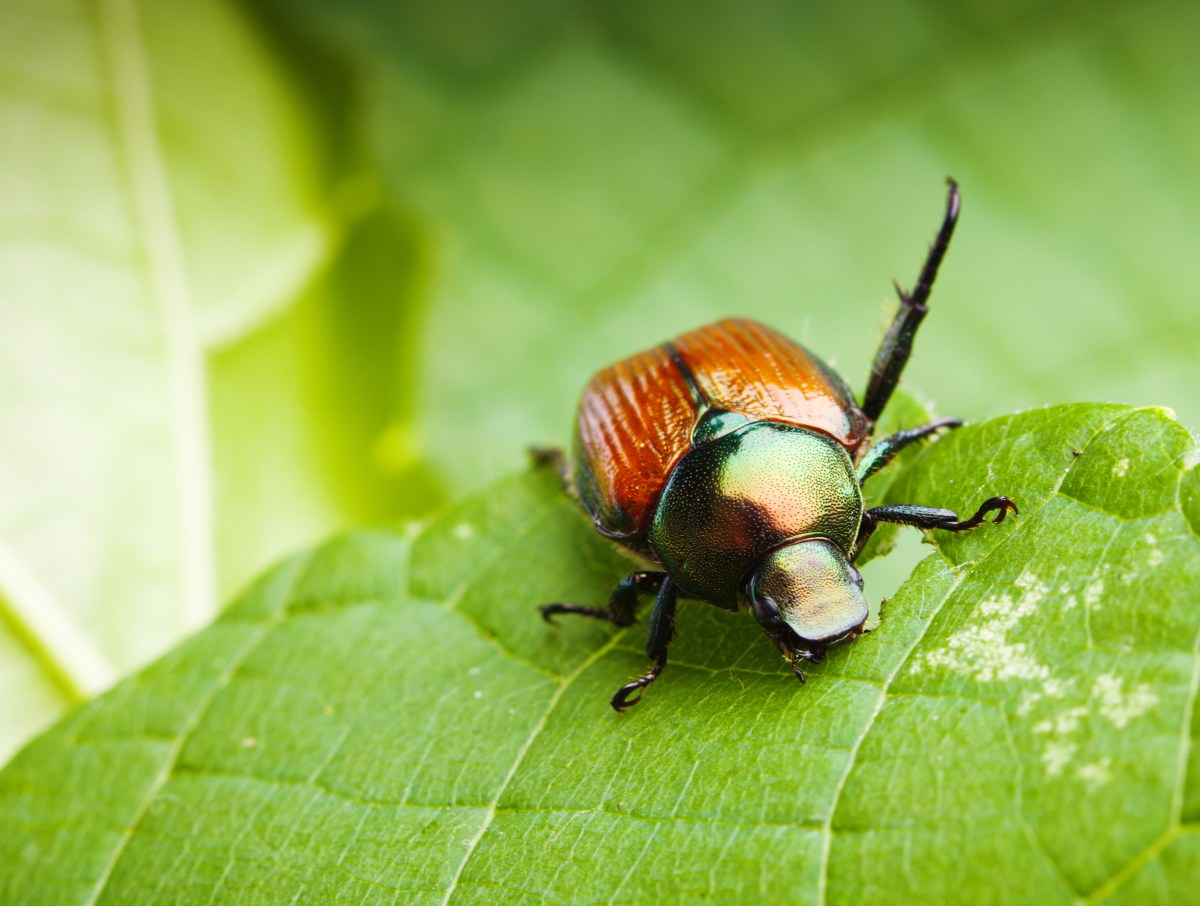
Iridescent, jewel-toned Japanese beetles may be beautiful, but they can inflict hideous damage from turf to trees. The grubs (larvae) feed on grass roots and the adults attack foliage and flowers on more than 300 plant species. Favorite plants for hungry Japanese beetles include:
- Maple trees
- Stone fruit trees (like plums and peaches)
- Roses
- Raspberries
- Grapes
- Corn
- Marigolds
Adult beetles are most active when it’s warm and sunny outside. They feed on the upper side of the leaves, removing enough tissue that the leaf looks skeleton-like. The best sign of grub damage is dead patches of grass, where roots have been destroyed below. At the first sign of an attack of adult beetles, use a neem-oil-based insecticide, which is relatively harmless to birds, mammals, and plants.
2. Aphids (Aphididae Family)
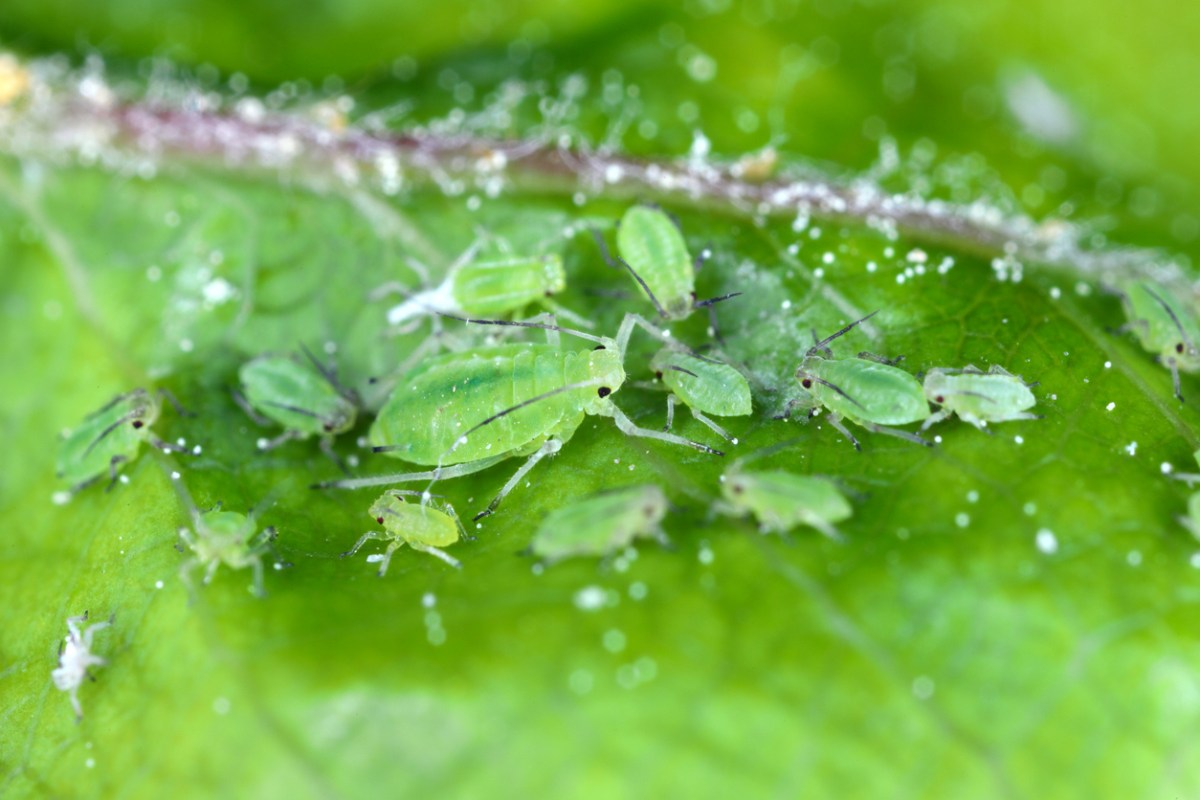
With more than 1,300 species found in North America, these tiny, sap-sucking aphids can feed on all plant parts, from roots and stems to petals and leaves. They reproduce rapidly, making it easy for an aphid infestation to spread throughout a garden. They suck on plant leaves, so a tree or shrub with curled, yellow, or stunted leaves is a sign of the bugs. They also drip honeydew, which shows up below where they gather and often attracts ants.
Discourage aphids by planting resistant flowers like marigolds and lavender, and encourage aphid eaters like ladybugs and lacewings. The best natural way to fight the aphids that do appear is to check the undersides of leaves regularly for the tiny (1/16 to ⅛ inch) bugs, and spray a blast of water on the plant in the morning to knock the bugs to the ground. If they get out of hand, spray aphids with neem oil or insecticidal soap. They seldom cause enough damage to require the use of pesticides.
3. Colorado Potato Beetles (Leptinotarsa decemlineata)
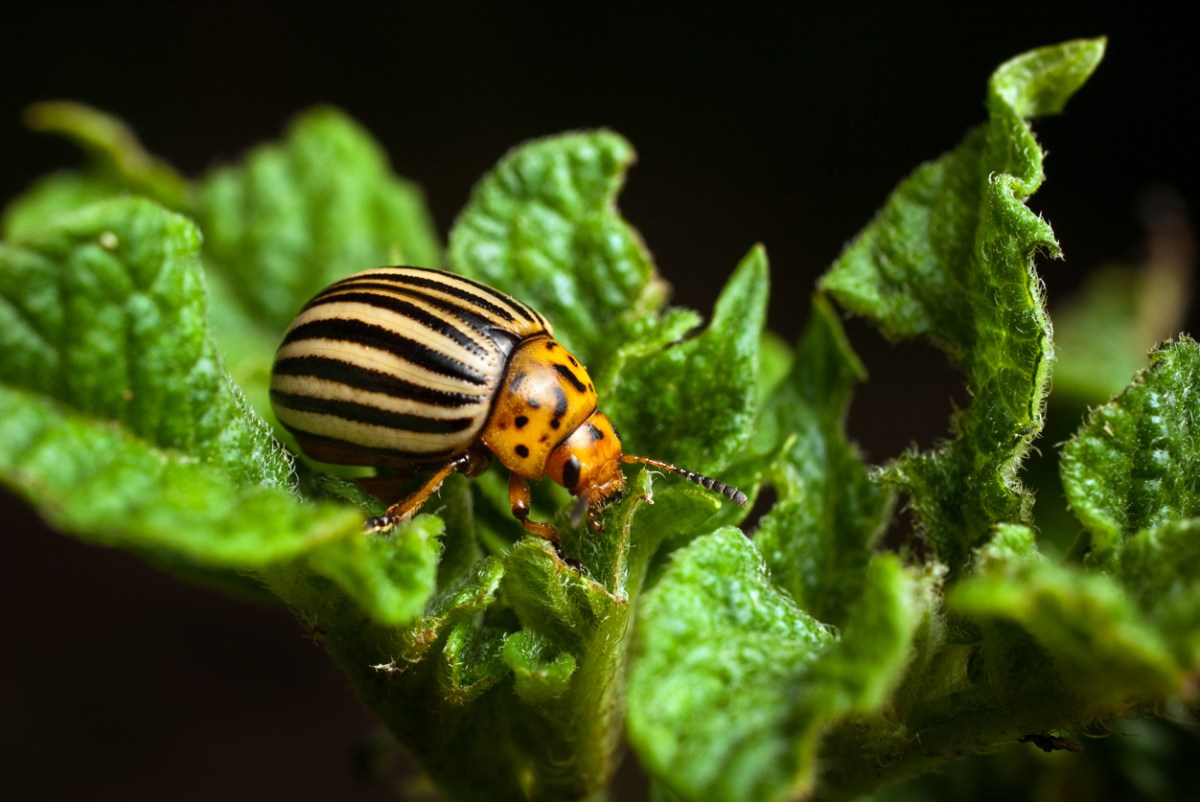
Don’t be fooled by the name: The Colorado potato beetle is a major pest throughout North America, not just in the Rockies, and the pests don’t just eat potatoes. These yellow-orange, ⅜-inch-long bugs will feast on your tomatoes, peppers, eggplants, and (of course) potatoes. The adults have a classic beetle shape with black and cream stripes on their wings.
The beetle larvae (which are small and orange) can defoliate plants, so regularly check leaves for damage. Clean up weeds and mulch between plants. You can pick the beetles off the plants and drop them in a bucket of soapy water, or use neem oil to help control them. Pesticides are not highly effective, but organic spinosad often is recommended for an infestation.
4. Cutworms (Noctuidae Family)
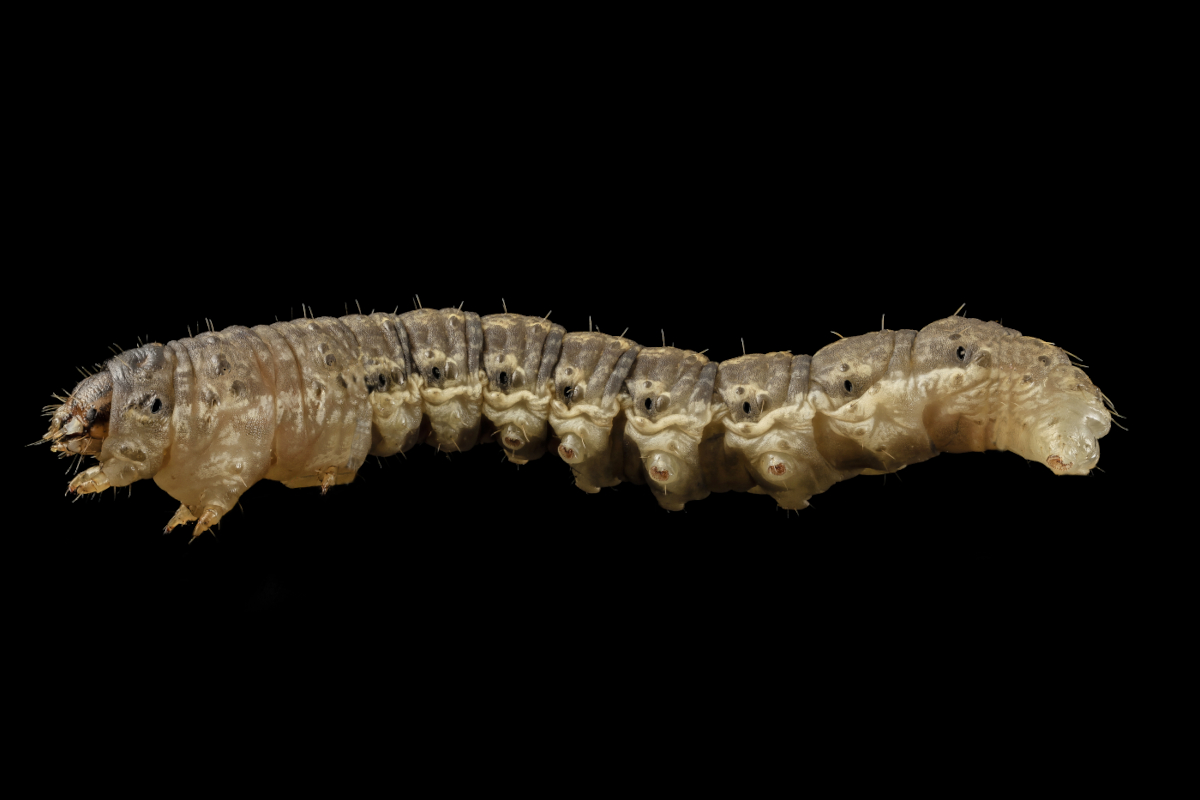
Larval stage Noctuidae are particularly voracious. They earned their name because they gnaw on stems below the soil, cutting down young plants in their prime. The cutworm type varies with the related moth; presence of the moths at night might help identify the related larvae.
Their host plants also vary by species, but cutworms are known to damage turfgrass, ornamentals, and nearly all vegetables, especially corn and potato plants. Larvae feed at night and are most present in late spring and early summer, when they sever young plants at their base. Surround stems in diatomaceous earth to protect against these hungry caterpillars.
5. Squash Bugs (Anasa tristis)
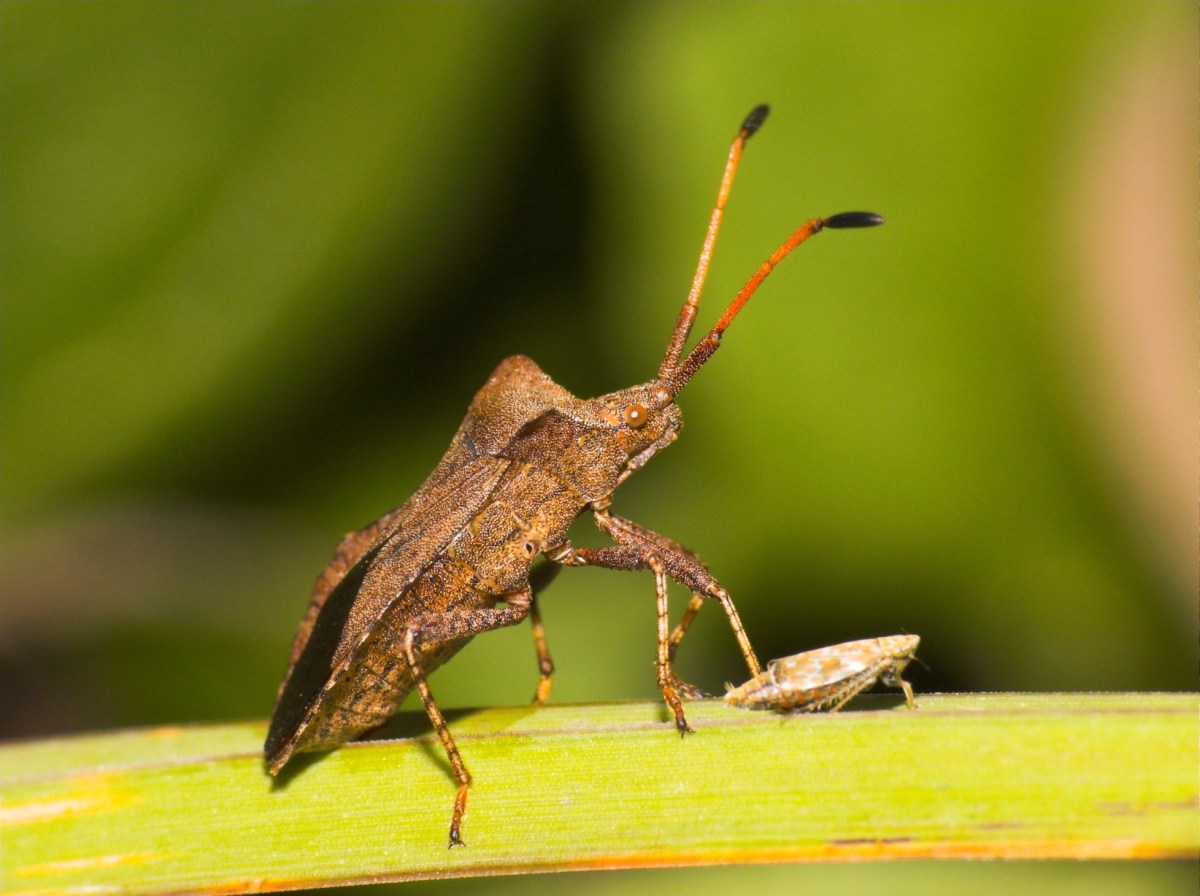
Zucchini and other squash are garden favorites because they grow rapidly and produce high yields. But beware of squash bugs, which can attack the entire plant. The ⅝-inch long bugs are flat and dark grayish-brown. Eggs are yellowish or bronze and oval. If infested, they appear on the underside of leaves.
Early detection is essential, so be on the lookout for yellowing and wilting leaves on squash and pumpkin plants. To get rid of squash bugs, crush eggs and handpick mature bugs whenever possible. If insecticides are necessary, try diatomaceous earth or pyrethrin as a last resort.
BobVila.com and our parent company, Recurrent Ventures, put conservation and sustainability at the forefront of much of what we do. Though the solutions offered in this content are all effective, not all of them are organic or sustainable. The staff of BobVila.com encourages readers to make informed choices about maintaining their home and property. We recommend starting with the least extreme solution, escalating only if necessary, and prioritizing solutions that will not have detrimental effects on the health and longevity of this planet and its inhabitants.
6. Flea Beetles (Alticinae Family)
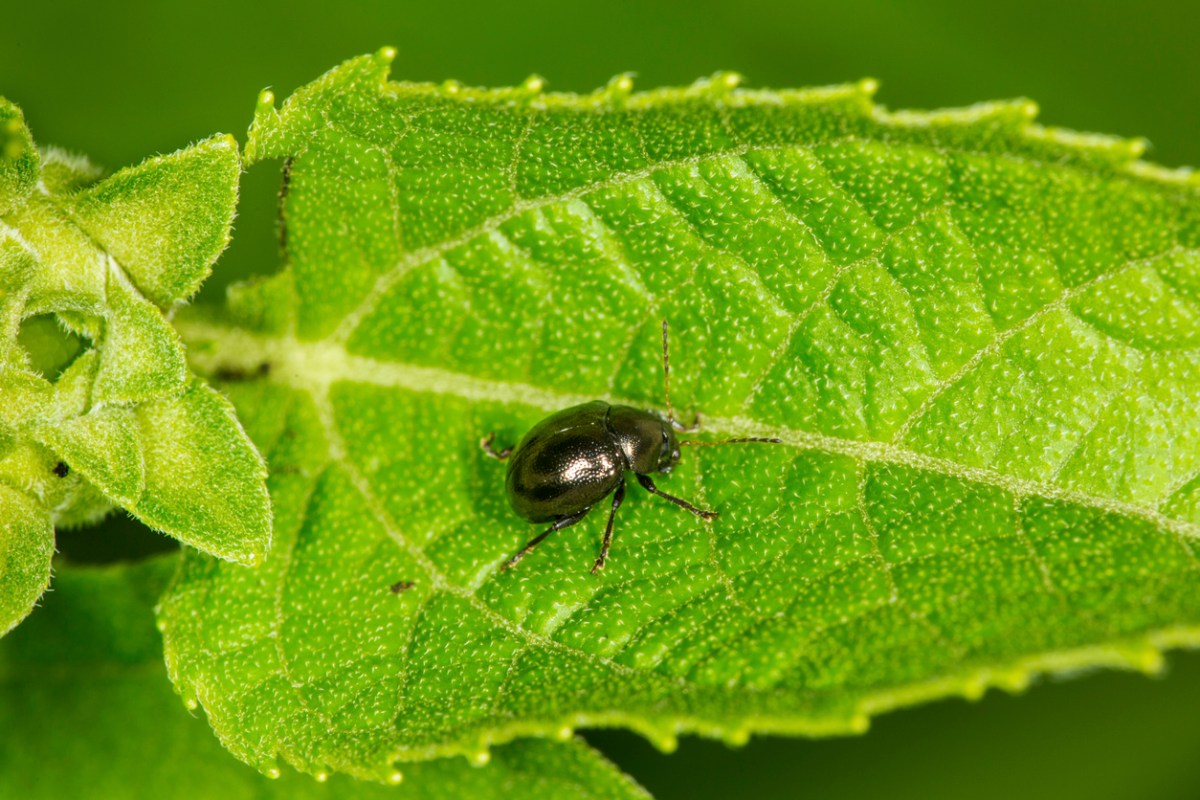
This common pest chews irregular holes in plant leaves and has a fondness for radishes, broccoli, cabbage, turnips, eggplant, peppers, tomatoes, potatoes, spinach, and melons. The larvae and, more often, the adult beetles, can damage these plants, along with some common ornamentals such as evening primrose.
To guard against flea beetles, control weeds around plants and remove debris. Use of row covers can help protect plants. Use yellow sticky traps to catch flea beetles before they spread. As a last resort, use a pesticide but follow directions carefully, especially if you’re treating edible plants.
7. Slugs (Phylum Mollusca)
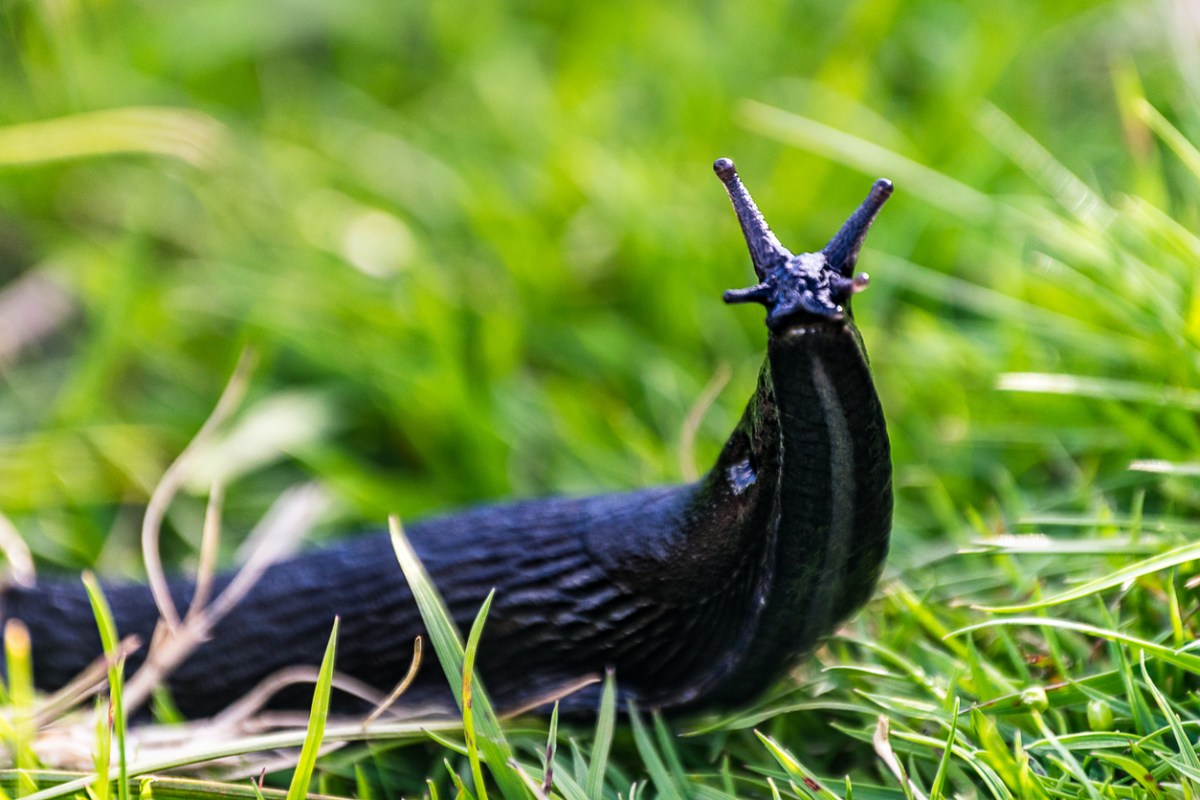
If your garden has resident slugs, you’ll notice the glistening trails and see big, irregular bite holes around leaves, flowers, and fruit. Slugs can eat their way through spring bulbs, hostas, lettuce, asparagus, and many other plants and flowers. Among the most common is the gray garden slug (Deroceras reticulatum Muller), a crop destroyer.
To get rid of slugs, handpick them and drop them in soapy water, or set out beer traps. Diatomaceous earth and slug bait can help control the problem.
8. Whiteflies (Hemiptera Order)
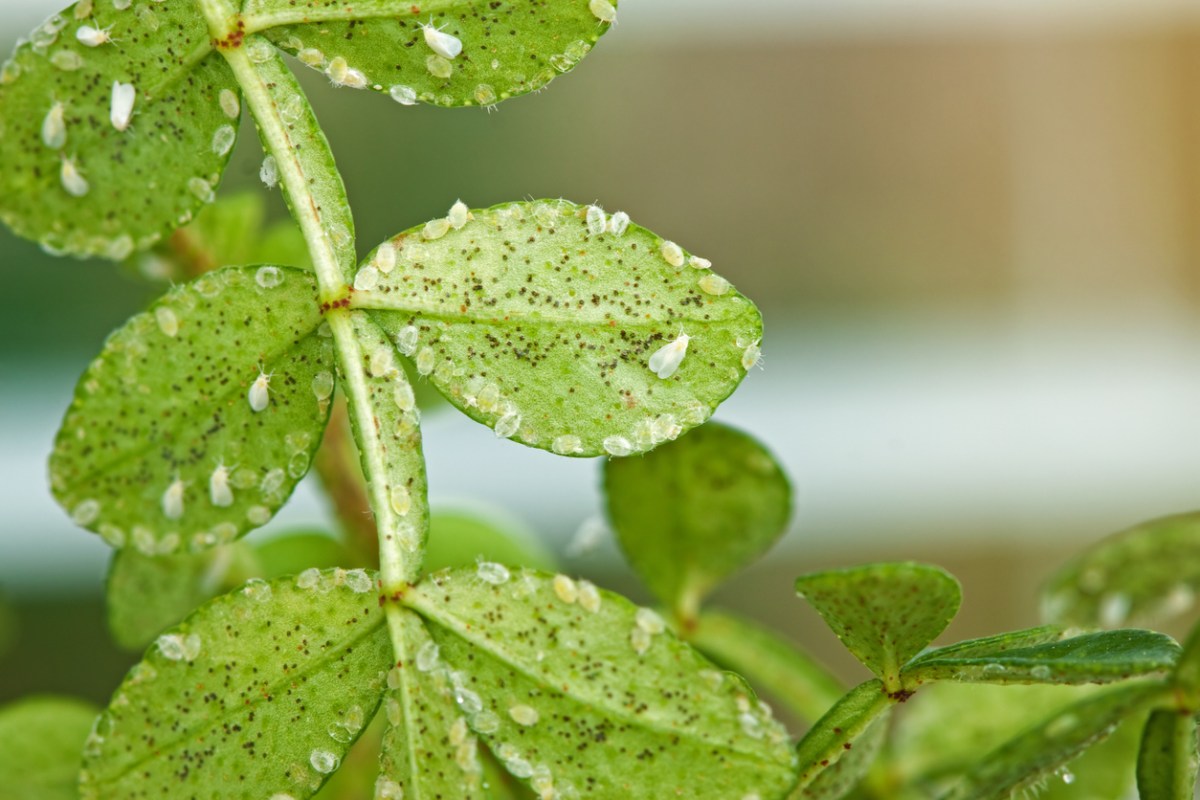
Tiny, sap-sucking whiteflies, of which there are nearly 1,200 species worldwide, are a problem for both indoor and outdoor plants. The plants they attack wind up weakened and develop wilted, yellowing leaves. These tiny relatives of aphids and mealybugs are only 1/10-inch long and lay their even tinier eggs on the undersides of leaves.
The host plants whiteflies attack are about as wide-ranging as the number of the pest’s types. Check for the flies or their sticky residue on newly purchased plants before placing them in the garden and remove affected leaves. A few whiteflies do little damage, but use neem oil and sticky yellow traps to decrease damage if their natural enemies are not doing enough to control them.
9. Rose Slugs (Endelomyia aethiops)
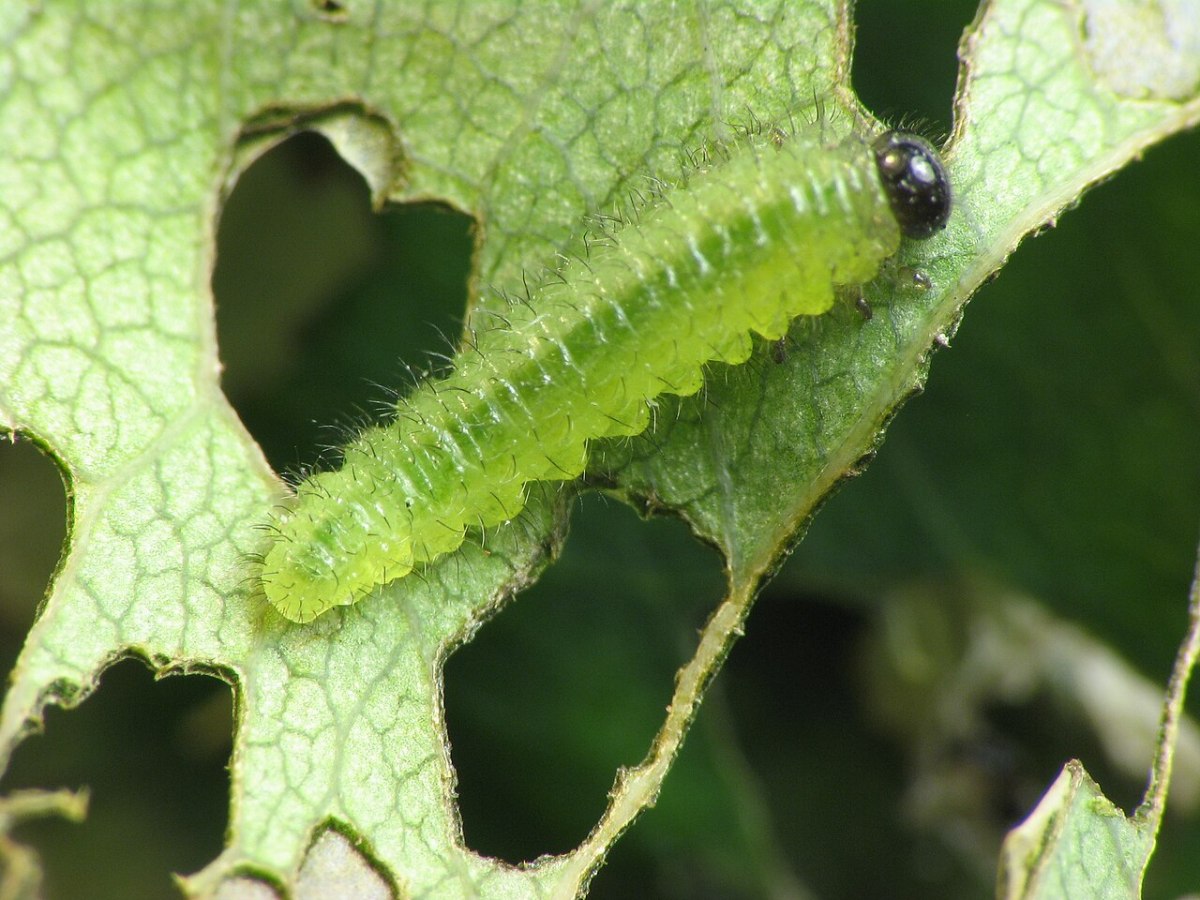
Not slugs at all, these sawfly larvae will skeletonize rose leaves, and early damage occurs in May or June. The leaves have tiny areas of transparent tissue, and heavy feeding can cause damage that looks like window panes. The insects are about ⅜- to ⅔-inch long and are mostly black.
Handpick or cut the sawfly larvae off of the leaves, and hope that their natural enemies help with control. Dispose of affected foliage for small areas of damage. To control a large population, spray roses with spinosad, a natural byproduct of soil bacterium that can be toxic to insects.
10. Grasshoppers (Acrididae or Tettigoniidae Families)
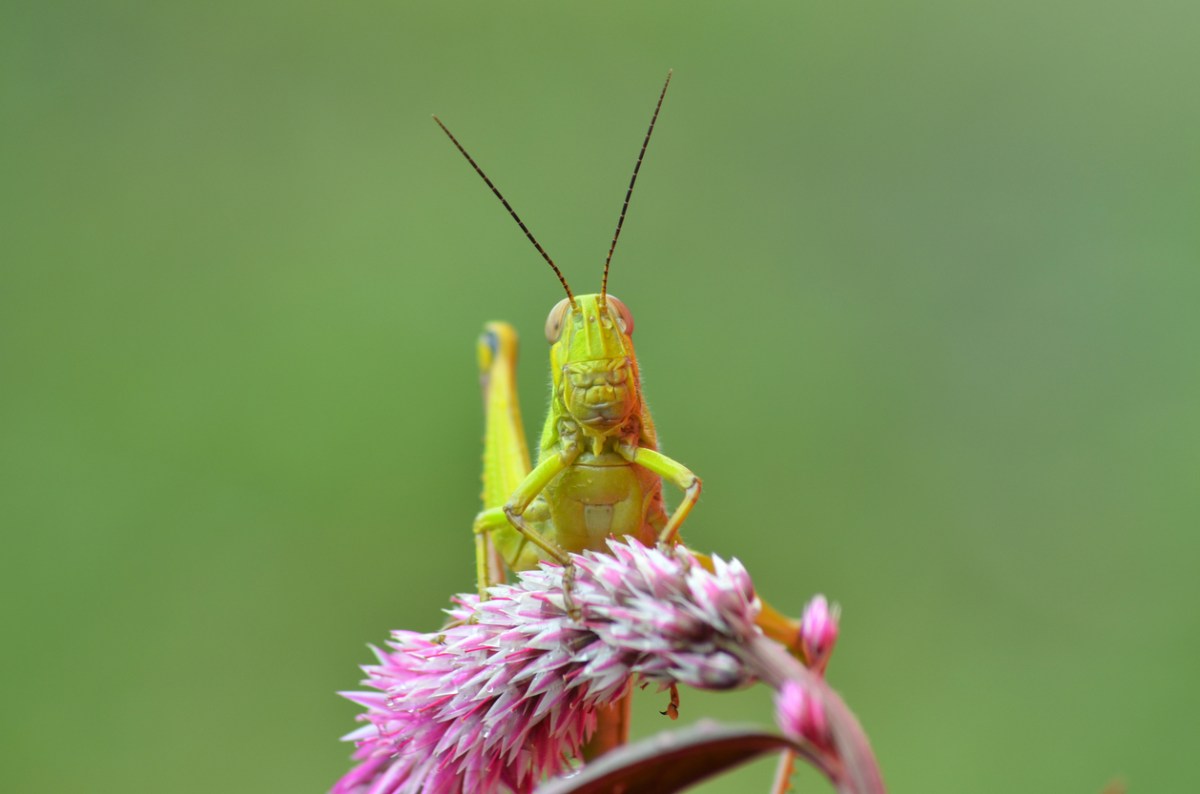
In the wake of warm, dry weather, large populations of various grasshopper species can infest domestic gardens, stripping plants of leaves and flowers. They especially like shrubs with large leaves and turfgrasses.
Be proactive by planting flowers like marigolds, daisies, and alyssum, which attract bugs that will attack grasshoppers. But accept that local grasshopper outbreaks are difficult to control, and often depend on the weather and factors like the surrounding environment, such as nearby pastures. Protective plant covers may be necessary to keep them off young and tender plants. Some sprays and baits may be available, but insecticides are often not effective unless done through a coordinated local effort to get rid of grasshoppers.
11. Squash Vine Borers (Melittia cucurbitae)
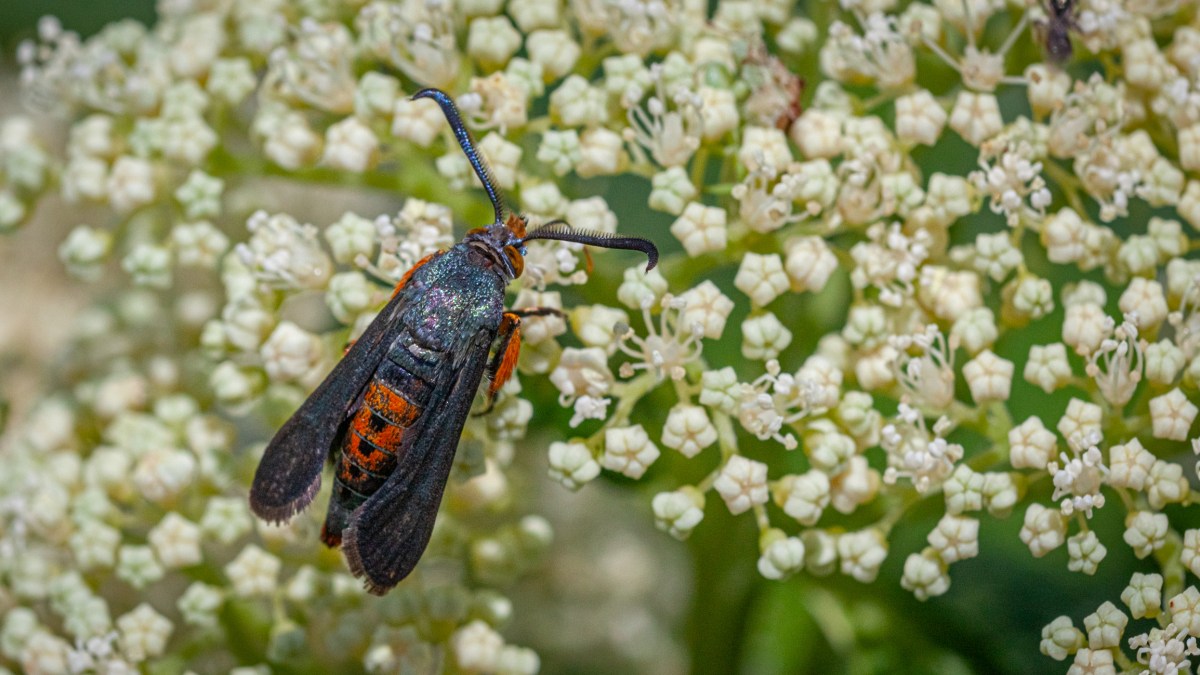
Unlike the squash bug, the squash vine borer is selective about the plants it feeds on, sticking mostly to large pumpkins, summer squashes, and acorn squash. This pest affects crops and home garden plants mostly in the Southeast and up to the Central Plains. It lays tiny eggs on lower portions of the vining plants’ main stems or even in cracks in the soil around a plant’s base.
Squash vine borers give home gardeners a little time to protect plants; they keep plants alive so the pests can complete their life cycles. Wilting leaves are a sign that you may have a squash vine borer problem. Another clue is the sawdust-like frass that appears in holes they make in the vines. Keep an eye out for wilting, eggs, and frass on plants. Carefully pick off the larvae or eggs or cut out the affected portion of the vine (not the main stem). Turn to pesticides like bifenthrin only as a last resort and treat the base of the plants and surrounding soil.
12. Spotted Lanternflies (Lycorma delicatula)
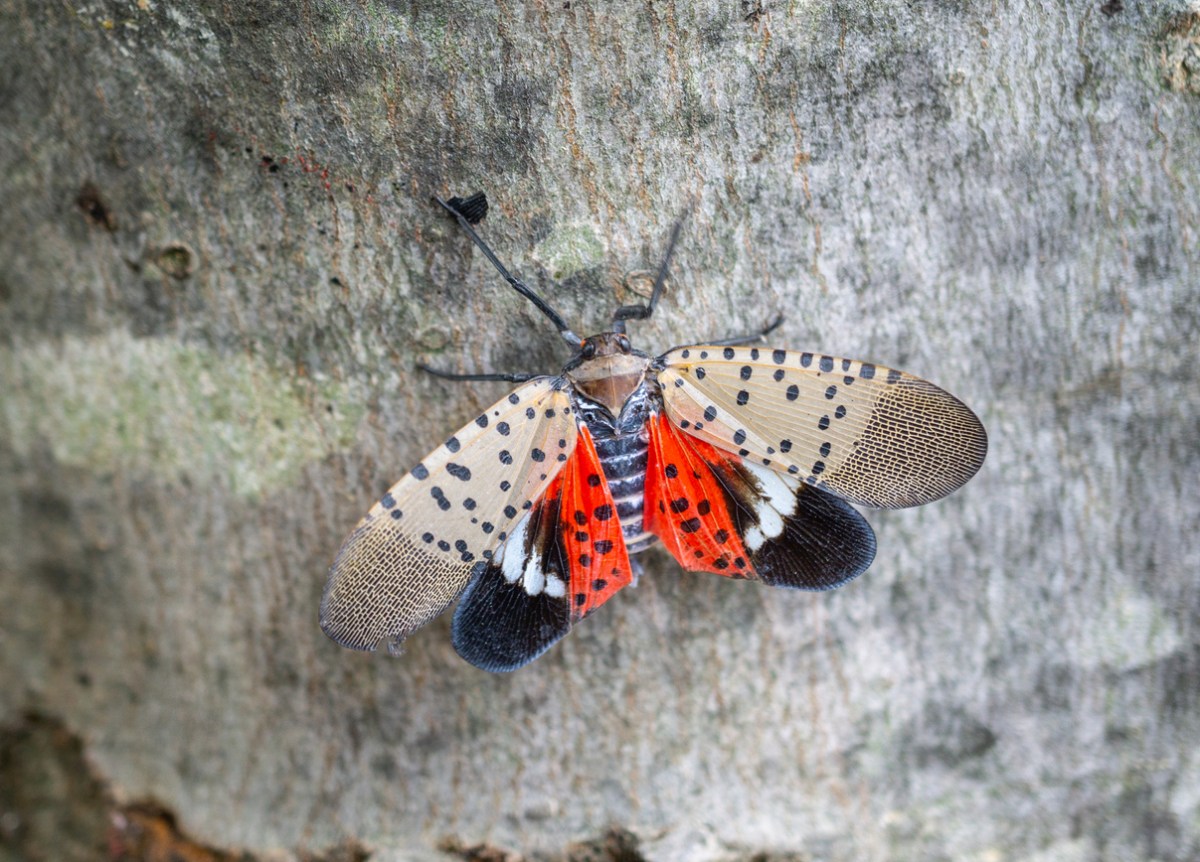
The invasive Spotted Lanternfly is a relative newcomer to the United States, but it has spread quickly. It could risk some crops and home gardens across the country. The 1½-inch egg masses look like smears of clay on any vertical surface. The nymphs have white dots on black backgrounds, and mature bugs have black dots on reddish-brown wings.
The pests feed in large groups and are already affecting grapes and some other crops or edible plants. The affected plants might wilt, lose leaves, or even die. The honeydew the bugs secrete can attract other insects as well. Sticky traps, neem oil, or insecticidal soaps are possible controls. Much still is unknown about the pest’s damage and control, but its spread is being tracked. USDA scientists have found that they seem to be attracted to the vibration of electrical power lines, which could lead to new IPM strategies.
13. Thrips (Thysanoptera Order)
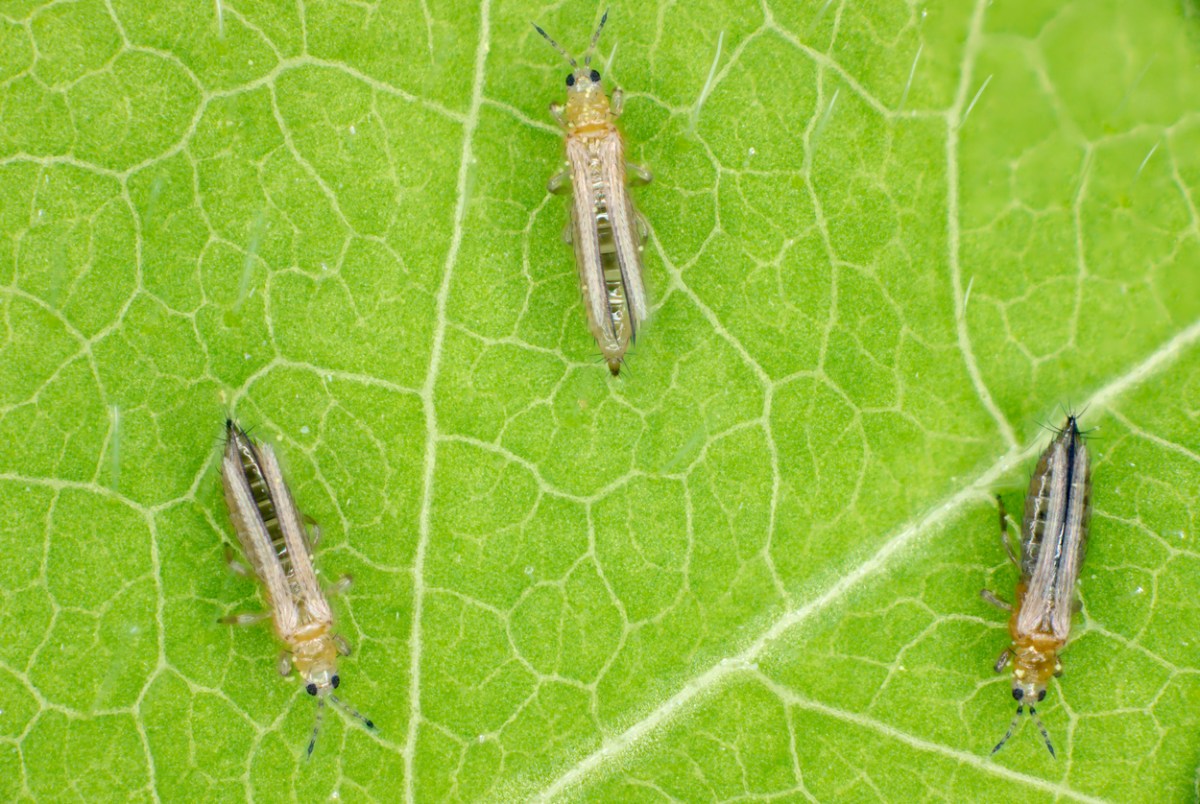
Tiny thrips are the bane of houseplant lovers, but they often enter a home right through the door, when they’re brought in on new plants or from cut flowers. Although thrips rarely kill an outdoor plant, they can wreak havoc on roses in late spring. Less than ⅛-inch long, the tiny flying insects feed within young rose buds, preventing them from opening. They also can damage some crops, like peppers.
In 2022, Florida gardeners first noticed a new invasive species of thrips (Thrips parvispinus), and recently there were reports of thrips attacking gardenias in the Carolinas. Although they can be shaken from some plants, it is best to remove affected buds and destroy them. Encourage wasps and other predators, and avoid planting susceptible roses or other ornamentals near weedy areas. Row covers also can protect plants during the peak season. They do not do enough damage to warrant use of pesticides. If damage is bad, try spraying the plants with a mineral or garlic oil.
About the Author
Teresa Odle was trained as a master gardener and to help detect invasive pests by the National Plant Diagnostic Network. She has gardened in rural and urban areas of New Mexico, and has tackled her share of garden insects. She is a garden writer and editor for both online and print publications.
